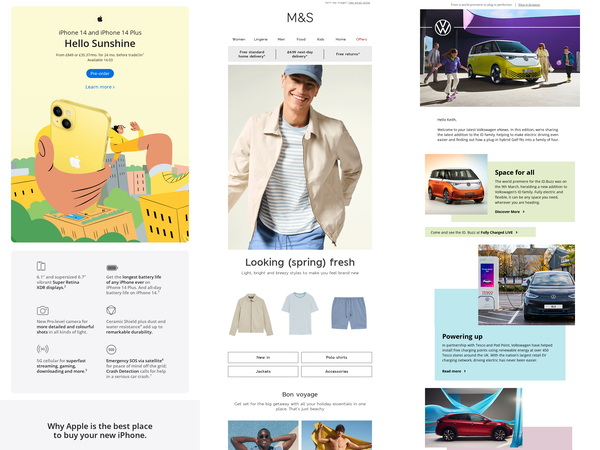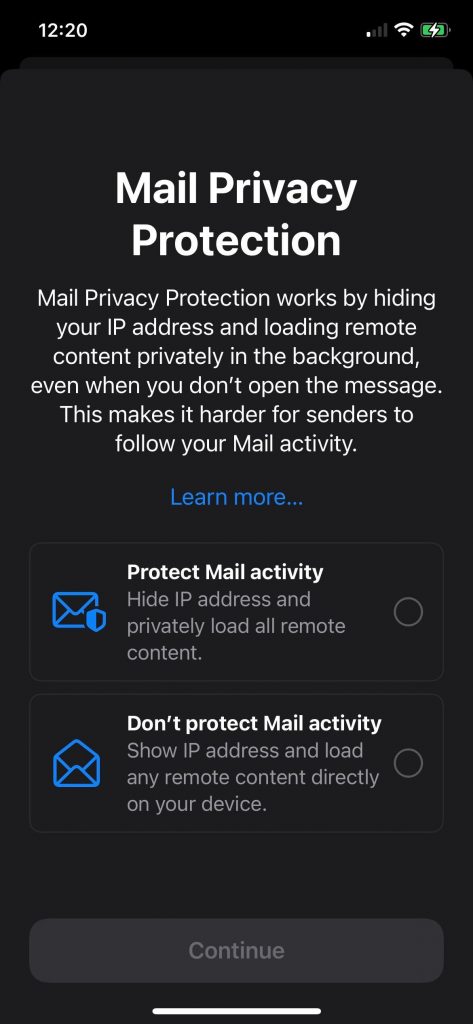I last wrote about the importance of tone of voice in emails in 2015. While much has changed (in part due to the rise of social apps like Tik Tok and Instagram and more recently generative content AI), many businesses are still creating marketing collateral that comes across as stilted and impersonal when it comes to email.
Whether the excuse is ‘we’ve always done it this way’, fear of brand perception or just plain lack of imagination, adopting a corporate approach no longer fits with how we behave online.
Certain business sectors allow for more flexibility than others but there is scope to increase the appeal of your email messages with colloquial writing.
TV advertising has been doing this for decades because you can see and hear people in situations where anything other than relatable interaction seems out of place (although there are unnatural situations – those cringe-worthy life cover or funeral plan ads for example).
TV ads actually lean toward extremes to create dynamism so human interaction and everyday language is pronounced and quick-fire to make the most of the short message time.
The ways we interact online now is much the same as if we were there in person – screen communication is second nature, especially to Gen X, Z and Alpha.
And now there is a new player in town for writing, creativity and ideas in general; the rise of the robots!
The easy life?
Yes, the likes of ChatGPT can save time and generate copy in the style of a range of writing styles by accessing past works but it’s not original, nor will it work for a brand wanting to express individuality or stand out from the crowd.
I have spoken with time-poor marketers who find it difficult to avoid generative AI, but promising at the least to rework content output to fit their brand, products, current offers and timings.
But even using AI as a start point means the initial creative process suffers and whilst emails shouldn’t be novels, they should have original content, an individualistic approach and be created by people immersed in their brand with mind-mapping capabilities. It’s no bad thing to have a human flaw or two in the mix either.
The alternative is the emails we receive becoming increasingly similar and there are enough of those out there as it is.
AI for email has been around for a while and is one of the tools many ESP software platforms incorporate so digital marketers aren’t afraid of it – but perhaps we should be this time. The pace and global adoption of AI for creative use should be a concern for all of us.
Don’t get lost in the noise
Creating copy for emails is about more than brand voice. We need to differentiate ourselves from our competitors and peers to stand out.
Many marketing emails – particularly in the B2B space – have a generic tone and display stock images in a linear layout in the hope people will read on and click on something. Adopting a conversational approach doesn’t have to be boring or misrepresent your brand.
By sticking to the script – be it generalising or by using output from generative AI – we risk coming across as robotic and detached which means our message becomes less appealing, leading to diminished engagement.
Attention spans are short online and fragmented across multiple channels and devices so it’s critical to engage people as quickly as possible with a friendly and distinctive approach.
The ever-increasing hours we spend with our devices is driving change in communication styles, making a less conversational approach to marketing feel outdated.
Grab me now
Two key areas in marketing emails are the initial headline – which should draw people into the rest of the email – and your call-to-action. Your headline should be succinct and pique interest, maybe using a question or humour as long as it is consistent with the theme and content.
The call-to-action should be different to what we all see too often. ‘Buy now’, ‘Read more’, ‘Don’t miss out’, ‘Find out more’ are better than ‘Click here’ but they’re all overused and easily passed over.
Instead, come up with copy unique to your brand and email theme. There are more words to play with in text links but you can have fun with button text too.
And it’s not just the tone of voice in an email – the design, layout, images and call-to-action placement all need to be connected and coherent. Emails should work well on mobile devices and be able to appeal in multiple physical settings.
By the book
If you don’t already have one, create a ‘copywriting brand bible’ with customer types, tone of voice, language and style – including words that encapsulate your brand identity (and ones that don’t). Follow brands that have a tone of voice and identity you like, as well as ones that don’t.
Join the dots
Ensure the brand message remains consistent so as not to confuse or disenfranche customers. All emails – newsletters, sales, order confirmations, delivery notifications, follow-ups etc. should tie in. Make the customer journey as memorable and joined up as possible.
Look at me
Vacassa, Nonny and Howies all send emails that are visually striking and easy to read:

And you don’t have to be a small or ‘funky’ brand to look good – Apple, M&S and VW use clean images combined with bold colours and good use of space in these examples.

It’s only natural
Marketing should reflect how integral the online world is in our daily lives. Allied to effective segmentation, targeted content and unique language, people will feel more comfortable and trusting when interacting with brands – not just see them as faceless entities mirroring each other in our inboxes in the hope of making a quick buck.
Change can be a scary prospect for some brands and marketers but the beauty of email is that it is quick, easy and cost effective to test. Sending to small data segments to gauge how well messages are received and how well they perform will give marketers the knowledge to get closer to customers and that’s a win for both sides.
The likelihood of any of us being offended by a brand being more approachable is remote, in fact we prefer it. We’re all human and we’re all unique, so why communicate with us as if we’re not?





